Spot Ethereum exchange-traded funds (ETFs) traded in the USA skilled sustained outflows from late September to mid-October, which coincided with a interval when the ETH/BTC ratio was comparatively weak.
Nonetheless, non-US capital inflows and a continued enhance in staking have dampened the affect on costs, suggesting the headwinds are non permanent slightly than structural.
The query of whether or not ETF redemptions are inflicting Ether’s underperformance relative to Bitcoin requires analyzing stream information alongside by-product positioning, staking provide sinks, and regional variations.
ETF creation and redemptions replicate the exercise of licensed individuals slightly than direct shopping for and promoting, and their relationship to cost relies on broader market construction, together with funding charges, foundation spreads, and competing yield alternatives.
Proof exhibits that the outflow window when derivatives positioning goes unfavorable corresponds to weak spot in ETH/BTC, however staking inflows and European shopping for are repeatedly absorbing US promoting stress, limiting spillover from flows to identify.
stream sample and timing
U.S. Spot Ether ETFs have oscillated between heavy inflows in July and August and weeks-long intervals of outflows in late September and mid-to-late October.
Within the week ending September 26, Grayscale’s ETHE noticed document redemptions of round $796 million within the US as traders switched to lower-fee merchandise or exited positions completely.
Outflows resumed between October twenty third and twenty fourth, with internet redemptions totaling roughly $169 million throughout US Ether ETPs through the week ending October twenty seventh.
These intervals coincide with the decline in ETH/BTC on a weekly closing value foundation, supporting the speculation that flows are conveying value alerts.
The other sample appeared in early October. The week ending October 6 introduced internet inflows to the USA of roughly $1.48 billion.
In a broader risk-on setting, the Ether ETF and ETH/BTC stabilized or rose. The correlation between inflows and relative energy, and outflows and relative weak spot, when aggregated to weekly frequencies, persists over the interval from July to October.
Nonetheless, this relationship breaks down when noise happens within the day by day interval and regional or by-product components develop into dominant.
Merchandise traded on Ether exchanges exterior the US complicate the story. CoinShares information exhibits that Germany, Switzerland and Canada absorbed Ether ETPs through the outflow from the US in mid-October, leading to internet inflows globally in a matter of weeks regardless of redemptions by the US.
The Hong Kong Spot Ether ETF stays small, however a second information level exterior the US will probably be added because the market matures.
Regional variations counsel that US flows are essential however not ample for value modeling, and international demand may offset home promoting, particularly if European traders view drawdowns as entry factors.
Derivatives amplify stream alerts
Aligned by-product positioning strengthens the connection between ETF flows and ETH/BTC efficiency.
The CME Ether futures open rate of interest and perpetual funding price act as amplifiers. If the three-month annualized foundation falls into unfavorable territory and funding rates of interest flip unfavorable, value stress from capital outflows will intensify.
Conversely, constructive foundation and elevated funding can soften the affect of redemptions by indicating speculative demand and willingness to pay for leverage.
Open curiosity in Ether futures has elevated by way of October, reflecting elevated institutional investor participation within the stream cycle, in response to CME Group information.
The weighted common perpetual financing price tracked by aggregators turned unfavorable through the outflow interval in late September and turned unfavorable once more in mid-October, suggesting that lengthy leveraged positions have been being unwound as ETFs matured.
The twin pressures of spot promoting as a result of ETF redemptions and by-product deleveraging seem like driving the steepest interval of ETH/BTC underperformance.
As foundation and funding stabilize or flip constructive, the hyperlink between flows and costs weakens. A surge in inflows in early October coincided with aggressive fundraising and a transfer to stronger footing, and ETH/BTC halted its decline regardless of blended alerts elsewhere within the crypto market.
The interplay time period between stream course and by-product positioning is extra predictive than flows alone, according to prior analysis on Bitcoin ETFs, which finds that flows alone can clarify roughly 32% of day by day value fluctuations, however that their explanatory energy will increase when mixed with leverage metrics.
Staking and Liquid Staking Tokens as a Provide Sink
The variety of Ethereum Beacon Chain validators continued to develop by way of October, with internet validator entries absorbing ETH provide that would stream to exchanges and ETF redemption baskets.
Liquid staking token protocols reminiscent of Lido’s stETH, Coinbase’s cbETH, and Rocket Pool’s rETH additionally recorded elevated provide through the outflow interval, indicating continued natural staking demand unbiased of ETF exercise.
To quantify the offset, we have to examine the weekly change in staked ETH and LST excellent quantities to weekly ETF internet flows.
Beacon Chain information exhibits validator additions price tens of 1000’s of ETH per week from September to October, with LST provide progress recording an identical scale.
In complete, staking sinks typically matched or exceeded weekly US ETF outflows, suggesting that redemptions eliminated ETH from the change traded wrapper with out flooding the spot market as staking absorbed the launched provide.
Tokenized U.S. Treasuries, which supply on-chain yields of 4-5%, are a contender for capital that might be allotted to ETH or Ether ETFs.
Actual World Belongings Protocol studies tokenized authorities bond provide starting from $5.5 billion to $8.6 billion by 2025, offering a risk-free rate of interest different that may siphon off inflows in periods when complete Ether returns lag short-term rates of interest.
Competitors will probably be fiercest amongst institutional traders, particularly when ETH volatility will increase or the ETH/BTC ratio stagnates, evaluating Ether ETFs and tokenized cash market merchandise.
Measuring the connection between flows and value requires weekly aggregation to easy out intraday noise and reconciliation with the weekly closing value of ETH/BTC to know relative efficiency.
In the course of the interval from July to October, the correlation between weekly ETF internet flows and weekly ETH/BTC returns is constructive. Nonetheless, the coefficients differ relying on whether or not differential positioning and regional flows are included as controls.
Including an interplay time period for floor state and funding course improves the match and confirms that flows are most essential when derivatives are matched.
ETF creation and redemptions replicate the actions of licensed individuals in response to premium/low cost developments and finish investor orders, slightly than direct market making.
Day by day flowprints are topic to revision, and issuer-level variations in charge and tax lot buildings introduce noise into the combination sequence.
This evaluation additionally assumes that flows are transformed to identify buys and sells. This holds true if a certified participant hedges the era/redemption basket within the spot market, however breaks down if the hedging is completed by way of derivatives or over-the-counter desks.
The lag between reported flows and precise market affect can vary from hours to days, complicating intraday correlation testing and supporting weekly frequency as an applicable unit of study.
What to look at subsequent
ETF flows will proceed to point out modifications in marginal demand, however their forecasts will rely upon affirmation of alerts from derivatives and regional information.
Weekly monitoring ought to monitor US internet flows, non-US ETP course, weighted perpetual funding on a 3-month foundation, and validator queue depth.
The headwinds develop into even stronger when capital outflows from the U.S. are mixed with unfavorable foundation, unfavorable funding, and flat staking progress. If inflows from Europe or Canada offset US redemptions, or if staking absorbs the launched provide, the affect on costs will fade.
Catalysts that would reverse the stream regime embrace upgrades to the Ethereum protocol that affect the economics of staking, modifications to the charge construction of US ETFs that scale back ETHE’s value drawback, or macro shifts that compress Treasury yields and scale back RWA competitors.
The connection between flows and ETH/BTC additionally relies on the dynamics of Bitcoin’s personal ETF. If Bitcoin ETFs obtain giant inflows and Ether ETFs face redemption, the relative efficiency decline will develop into much more extreme.
Monitoring each asset lessons in parallel offers the clearest learn on whether or not Ether-specific components or broader crypto sentiment is driving the ratio.
If derivatives positioning and regional flows match, US Spot Ether ETF outflows are according to ETH/BTC declines, however elevated staking and purchases from exterior the US are repeatedly absorbing redemptions, limiting spot value transmission.
Headwinds are actual whereas base and funds are unfavorable and outflows are concentrated, however they’re non permanent slightly than structural.
Flows are most essential not as an unbiased issue driving Ether’s relative efficiency, however as a danger indicator that corroborates or contradicts alerts from derivatives, staking, and cross-border demand.










